
|
Astronomy Picture Of the Day (APOD)
 X Rays from the Cats Eye Nebula
X Rays from the Cats Eye Nebula
4.08.2008
Haunting patterns within planetary nebula NGC 6543 readily suggest its popular moniker -- the Cat's Eye nebula. Starting in 1995, stunning false-color optical images from the Hubble Space Telescope detailed the swirls of this glowing nebula, known to be the gaseous shroud expelled from a dying sun-like star about 3,000 light-years from Earth.
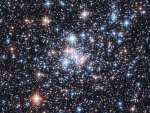 Open Cluster NGC 290: A Stellar Jewel Box
Open Cluster NGC 290: A Stellar Jewel Box
3.08.2008
Jewels don't shine this bright -- only stars do. Like gems in a jewel box, though, the stars of open cluster NGC 290 glitter in a beautiful display of brightness and color. The photogenic cluster, pictured above, was captured recently by the orbiting Hubble Space Telescope.
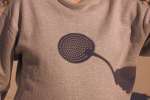 Eclipse Shirt
Eclipse Shirt
2.08.2008
Of course, everyone is concerned about what to wear to a solar eclipse. No need to worry though, nature often conspires to project images of the eclipse so that stylish and appropriate patterns adorn many visible surfaces - including clothing - at just the right time.
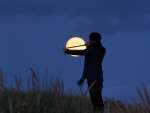 Moon Games
Moon Games
1.08.2008
The Moon's measured diameter is around 3,476 kilometers (2,160 miles). But apparent angular size, or the angle covered by an object, can also be important to Moon enthusiasts. Angular size depends on distance, the farther away an object is, the smaller an angle it covers.
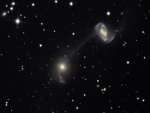 Galaxies on a String
Galaxies on a String
31.07.2008
Galaxies NGC 5216 (top right) and NGC 5218 really do look like they are connected by a string. Of course, that string is a cosmic trail of gas, dust, and stars about 22,000 light-years long.
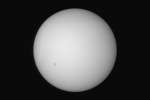 The International Space Station Transits the Sun
The International Space Station Transits the Sun
30.07.2008
That's no sunspot. It's the International Space Station (ISS) caught by chance passing in front of the Sun. Sunspots, individually, have a dark central umbra, a lighter surrounding penumbra, and no solar panels.
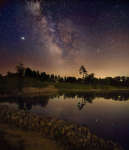 The Milky Way Over Ontario
The Milky Way Over Ontario
29.07.2008
Sometimes, after your eyes adapt to the dark, a spectacular sky appears. Such was the case earlier this month over Ontario, Canada, when part of a spectacular sky also became visible in a reflection off a lake.
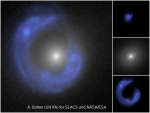 SDSSJ1430: A Galaxy Einstein Ring
SDSSJ1430: A Galaxy Einstein Ring
28.07.2008
What's large and blue and can wrap itself around an entire galaxy? A gravitational lens mirage. Pictured above on the left, the gravity of a normal white galaxy has gravitationally distorted the light from a much more distant blue galaxy.
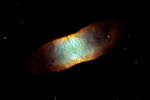 IC 4406: A Seemingly Square Nebula
IC 4406: A Seemingly Square Nebula
27.07.2008
How can a round star make a square nebula? This conundrum comes to light when studying planetary nebulae like IC 4406. Evidence indicates that IC 4406 is likely a hollow cylinder, with its square appearance the result of our vantage point in viewing the cylinder from the side.
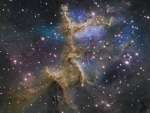 Central IC 1805
Central IC 1805
26.07.2008
Cosmic clouds seem to form fantastic shapes in the central regions of emission nebula IC 1805. Of course, the clouds are sculpted by stellar winds and radiation from massive hot stars in the nebula's newborn star cluster (aka Melotte 15).
|
January February March April May June July August September October November December |
|||||||||||||||||||||||||||||||||||||||||||||||||